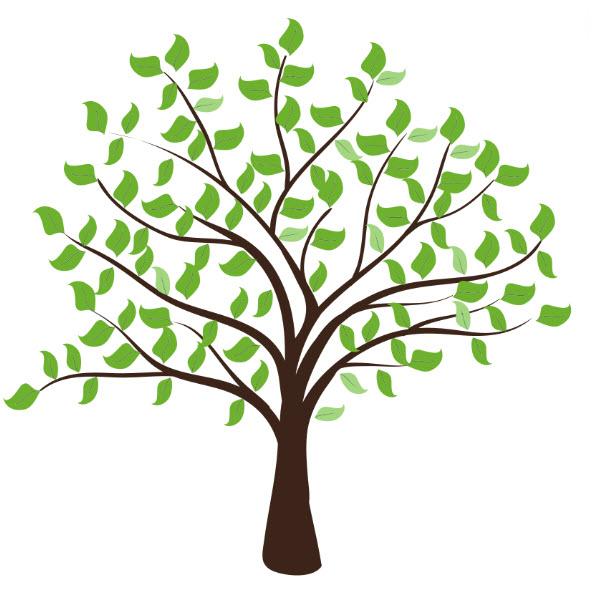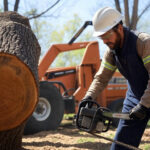Storm Damage
Trees are one of nature’s greatest gifts to any landscape, but they also present challenges when storms strike. Extreme weather events such as windstorms, heavy rain, and ice can cause significant damage to trees, posing threats to property and personal safety. Tree services play a critical role in both preventing storm damage and addressing its aftermath. Through routine maintenance, emergency response, and expert assessments, professional tree care providers help ensure the long-term health and safety of trees in any environment.
The Benefits of Routine Tree Maintenance
Routine tree care is a key factor in reducing the risk of storm-related damage. By maintaining healthy, well-balanced trees, homeowners can prevent many of the issues that arise during extreme weather conditions. Regular pruning, for example, reduces wind resistance and prevents branches from becoming too heavy, which can lead to breakage during storms.
Professional tree services also involve inspecting trees for signs of disease, decay, or structural weaknesses. These issues, if left unchecked, can make trees more vulnerable to storm damage. A diseased or weakened tree is far more likely to fail in high winds or heavy rains, potentially causing damage to homes, cars, and other property.
In addition to pruning and inspections, tree maintenance includes ensuring healthy root systems. Trees with strong, deep roots are less likely to be uprooted during flooding or heavy rainfall, which weakens the soil.
Types of Storm Damage
Trees are susceptible to various types of storm damage, depending on the nature of the weather event. Some of the most common include:
Wind Damage: High winds can break branches, uproot trees, or cause trunks to snap. Trees with dense canopies or shallow root systems are particularly vulnerable to wind damage.
Flooding and Water Damage: Heavy rainfall or flooding can lead to waterlogged soil, weakening the roots of a tree. This can cause trees to lean or fall over time, especially in poorly drained areas.
Lightning Strikes: Trees are common targets for lightning due to their height. When struck, the intense heat causes internal damage, often splitting the bark or even exploding the tree from the inside out.
Ice and Snow: Cold weather storms can cause ice to accumulate on branches, leading to breakage. Trees with brittle branches or dense foliage are at high risk during ice storms.
Emergency Tree Services: Responding to Storm Damage
When storms cause significant tree damage, emergency tree services are crucial for ensuring safety and preventing further harm to property. Fallen trees can block roads, damage power lines, or fall on homes, making immediate removal necessary.
Emergency tree services include the removal of fallen or hazardous trees, pruning of broken branches, and cleanup of debris. Professional tree care providers have the equipment and expertise needed to safely handle these situations, often under challenging conditions.
In some cases, trees that have suffered partial damage can be saved. Techniques such as cabling and bracing can provide support to weakened branches or trunks, allowing the tree to recover. Pruning and trimming damaged limbs also reduce the risk of future issues while helping the tree heal.
Professional Arborists and Tree Assessments
Certified arborists are essential in evaluating the health and safety of trees after a storm. They assess whether a tree can be saved or needs to be removed, looking at factors such as structural integrity, root stability, and potential for future decay or disease.
An arborist’s expertise ensures that trees receive appropriate care based on their condition. In some cases, a tree that appears damaged may still have a chance to survive, while others might need to be removed even if the damage isn’t immediately visible. This professional judgment is key to making informed decisions about tree removal or recovery.
Storm Damage and Insurance Claims
Understanding insurance coverage is critical when dealing with storm-damaged trees. Homeowners’ insurance often covers tree removal and property repairs, but policies can vary. Some insurance providers may not cover the removal of trees that pose a risk but haven’t yet fallen. It’s important to review your policy and understand what’s covered before a storm hits.
Tree service professionals often assist homeowners with documenting damage for insurance claims. This helps ensure that the removal and repairs are properly accounted for, reducing out-of-pocket costs for homeowners.
Helping Trees Recover from Storms
Not all storm-damaged trees require removal. In many cases, trees can recover with proper care. Some methods for helping trees heal include:
- Pruning: Removing broken branches encourages healing and reduces the risk of further breakage or disease. Proper pruning also maintains the tree’s structure, preventing imbalances.
- Fertilization and Mulching: These techniques help replenish nutrients and support root recovery, especially for trees that have experienced water stress or flooding.
- Pest and Disease Management: Weakened trees are more susceptible to pests and diseases. Regular monitoring and treatment can prevent infestations from further damaging the tree.
Preventive Tree Care for Future Storms
While it’s impossible to prevent all storm damage, there are steps homeowners can take to minimize risks:
- Choosing Resilient Tree Species: Some tree species are more resistant to wind, heavy rain, and other weather conditions. Arborists can help select the right trees for your area’s climate.
- Strategic Planting: Planting trees in appropriate locations, away from structures, power lines, or roads, reduces the chances of damage during a storm.
- Ongoing Maintenance: Regular tree care, such as pruning and inspections, ensures that trees remain healthy and better able to withstand storms.
Conclusion
Tree services are essential for preventing and addressing storm-related damage. From routine care to emergency response, professional arborists and tree care experts help protect homes, landscapes, and trees themselves from the challenges of extreme weather. By investing in regular maintenance and being prepared for storms, homeowners can reduce the risks posed by trees during severe weather, ensuring safety and the long-term health of their trees.


